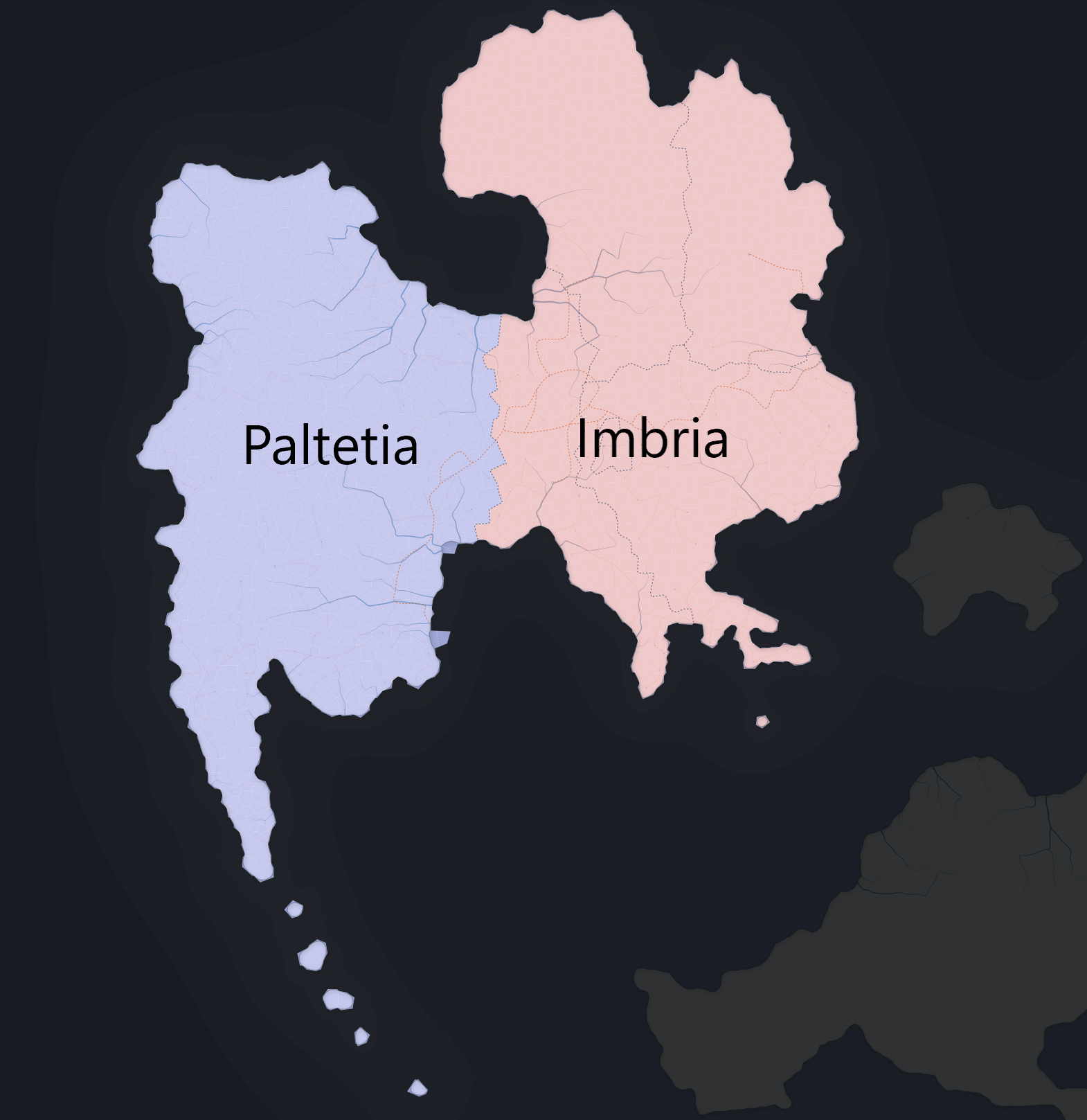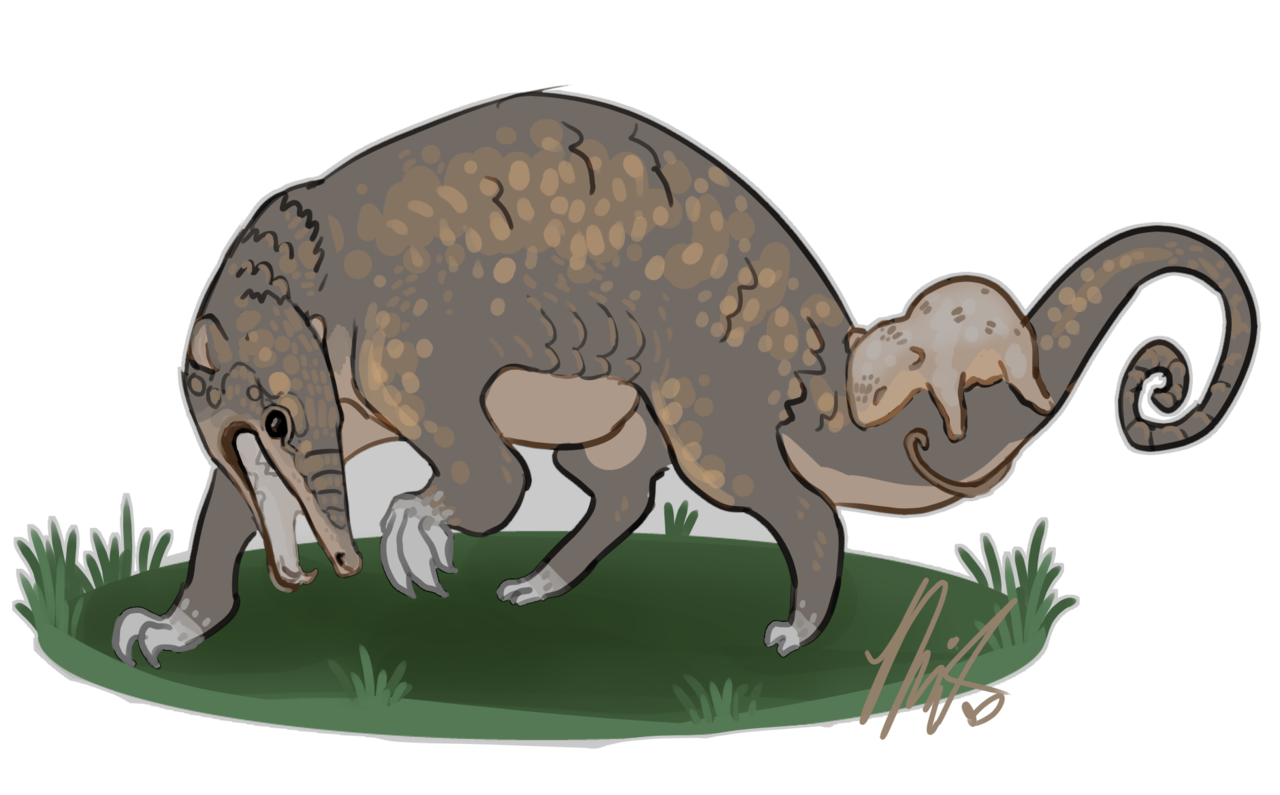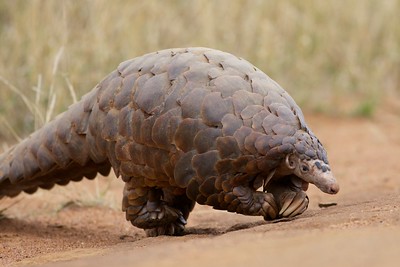Magimandus - Magic Eater
My first time venturing into Eldahi land, one of those beasts attacked me and stalked me until I was clear of the forest. I still have the scars! You couldn't pay me to go back into the Great Woods.A magimandus is a vicious, medium-sized creature with the body shape and build of a wolf, but with sharp, armor-like scales all along its body. It can sense and track even trace amounts of magic.
Its scales protect it well from most physical damage, and it is resistant to most types of magic. It is vulnerable to electrical energies, though this is not widely known.
plural: magimandi The magimandus was thus named due to its peculiar ability to sense magic. It is thought to consume energy from witches and other magical beings.
About the name
Magimandus: (singular) magic eaterplural: magimandi The magimandus was thus named due to its peculiar ability to sense magic. It is thought to consume energy from witches and other magical beings.
Conservation Status
Endangered - overall status Magimandi once roamed forested regions throughout Wennovi. Due to deforestation, habitat encroachment, and hunting, their numbers have declined dramatically in the last few centuries. Today, in Paltetia, the western half of Wennovi, they are thought to be Extinct in the wild (EW). In Imbria, the eastern half of Wennovi, they are protected by the Eldahi people, who reside in the Great Woods. Even so, with such a limited habitat range, low reproduction rates, and illegal poaching, the eastern magimandus is classified as Vulnerable (VU).Basic Information
Anatomy
The magimandus has the overall body shape of a wolf with a wolf-like snout and sharp canine teeth. It is covered with hard, spiky scales. Hair grows at the base of the scales and on any exposed surfaces, like the belly which is soft and furry.
While it often walks on all four limbs, it can also use its long, wide tale to balance and walk on its hind legs.
Armored Scales
A magimandus's scales are made of keratin, the same substance that makes up hair, nails, and hooves of other creatures. These scales account for nearly 20% of a magimandus's weight.Defense
A magimandus's scales are an amazing defense mechanism. They are hard, thick, and able to withstand great force and most magic. When threatened, a magimandus will hunch its back and curl in on itself, protecting its soft, vulnerable belly and exposing the sharp ends of the scales. The magimandus can curl up into a tight ball when necessary. A mother will curl around her baby to protect it. These amazing scales can protect the magimandus from most enemies.Offense
These sharp scales extend down the tail, which the magimandus can use to lash out at enemies with surprising force. Additionally, it might charge at an enemy, using its large mass and momentum to knock down an opponent. Its long front claws and fangs are also effective at ripping and tearing into prey. The magimandus is not known to utilize any offensive magic, though some people claim to feel a drain on their energy levels when in the presense of one.Genetics and Reproduction
The magimandus is a mammal that typically produces 1 offspring at a time. Very rarely, they will birth twins. Larger litters have not been recorded. Mating season occurs once per year.
Growth Rate & Stages
Baby magimandi are called magipups, and are born with soft scales that harden within days. The first month of life is spent in a den with the mother. After one month, the two will begin to venture out of the den. The mother will introduce her pup to the rest of her pack when it is roughly two months old.
A magipup is carried on the mother's back or at the base of her tail. If threatened, the mother will curl up around the infant to protect it. Magipups nurse for 3 to 4 months, and remain in the mother's care for 2 years.
Magimandi reach sexual maturity at around 2 years. At this point, particularly aggressive males will often leave the pack, choosing a more solitary life, seeking a mate, or challenging the head of another pack.
Ecology and Habitats
The primary, natural habitat for the magimandus is the Great Woods of Wennovi, a temperate deciduous forest. They are known to roam the entire forest, but they can most often be found near rivers and other water sources. They are terratorial.
Wennovi once had vast swaths of forested regions where magimandi roamed, but much of their habitat, particularly in Paltetia, has disappeared due to human activity.
Wennovi once had vast swaths of forested regions where magimandi roamed, but much of their habitat, particularly in Paltetia, has disappeared due to human activity.
Dietary Needs and Habits
Primarily carnivorous, though it is still believed to consume magic.
On average, a magimandus requires nearly 10 pounds of meat per day and can eat up to half its body weight in a day. It requires more dietary intake than the wolf due to the added weight and musculature required to maintain its plate-like scales.
Magimandi are apex predators who play a vital role in controlling deer populations throughout the Great Woods. Packs will work together to take down larger prey like moose and wild boar. They also feed on rodents, other small mammals, and occasionally birds.
Their primary source of competition is the wolf. However, magimandi are highly territorial, and wolves will often avoid marked magimandi territory.
Biological Cycle
The magimandus does not hibernate nor does it experience a true molting event. Scales and fur are shed throughout the year.
Additional Information
Social Structure
Magimandi form small packs that hunt cooperatively. Some individuals do choose to remain solitary.
A pregnant mother will separate from the pack to create her den in which she will birth and nurse her pup for the first month. After about 2 months, the mother will introduce the pup to the rest of the pack, and the two will reintegrate.
A pregnant mother will separate from the pack to create her den in which she will birth and nurse her pup for the first month. After about 2 months, the mother will introduce the pup to the rest of the pack, and the two will reintegrate.
Domestication
The western magimandus in Paltetia is bred in captivity. Over years of selective breeding, the western magimandus is generally larger and more aggressive than its wild cousin, the eastern magimandus.
While not domesticated, the western magimandus is bred through a secretive government program to hunt magic wielders. The general populace is kept unaware of the species.
Uses, Products & Exploitation
In Imbria, dried and ground magimandus scales are used in traditional medicines and potions. The scales are also used in some material goods such as jewelry and are thought to ward off negative energies.
The Eldahi people who share their habitat protect the magimandi and gather scales that have naturally been shed by the creatures. They claim that naturally shed scales have more potent magical properties and are more durable, and therefore, these humanely gathered scales are more highly valued for use and trade.
However, demand for the scales, is so high that poaching is on the rise.
Facial characteristics
Long snout with sharp teeth. Smaller scales extend down the top of the snout. Small ears.
Average Intelligence
Thought to have similar intelligence to a dog. The magimandus is stubborn, but trainable. However, they often remain aggressive and wild.
Perception and Sensory Capabilities
- Senses magic, possibly through mechano-receptors that detect faint bioelectric fields or biopotentials
- Strong sense of smell
Lifespan
14 years in the wild
Conservation Status
Endangered (EN)
- Western magimandus: Extinct in the wild (EW)
- Eastern magimandus: Vulnerable (VU)
Average Height
1.7 to 2.4 ft (at shoulder)
Average Weight
Females: 61 to 102 lbs
Males: 84 to 132 lbs
Males: 84 to 132 lbs
Average Length
4 to 5 ft (body length, not including tail)
Average Physique
Muscular
Body Tint, Colouring and Marking
Shades of gray, tan, and brown
Related Materials
Like cuddling a magimandusThis popular saying can be heard all throughout Imbria to describe a difficult or cantankerous person.
Geography Summary

Wennovi by hcraven using Azgaar's
The Great Divide
The Great Divide, a magic barrier, divides the two and lies directly on the western border of Eldahi. It is over 1000 miles long and has stood for over 1000 years.Related Articles
Pangolin
The magimandus is greatly inspired by the pangolin, particularly the giant pangolin of Africa. Pangolins are scaly anteaters that are found in Asia and Africa. They are heavily poached and trafficked for their scales and meat.There are 8 species of pangolin. 2 are listed as endangered, and 2 as critically endangered.
https://www.worldwildlife.org/stories/what-is-a-pangolin





An interesting species you got there! I love the art for the magimandus, especially with how its magipup is resting on its tail. I also like the idea of them being able to sense magic, and I'm rather curious to learn more about the government program that's weaponizing them. It's a shame they are endangered though.
Thank you :)